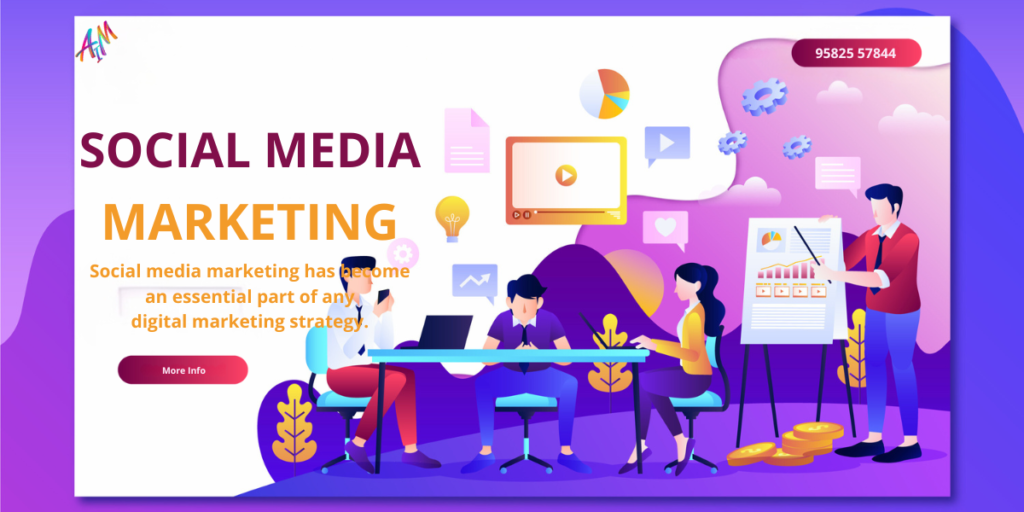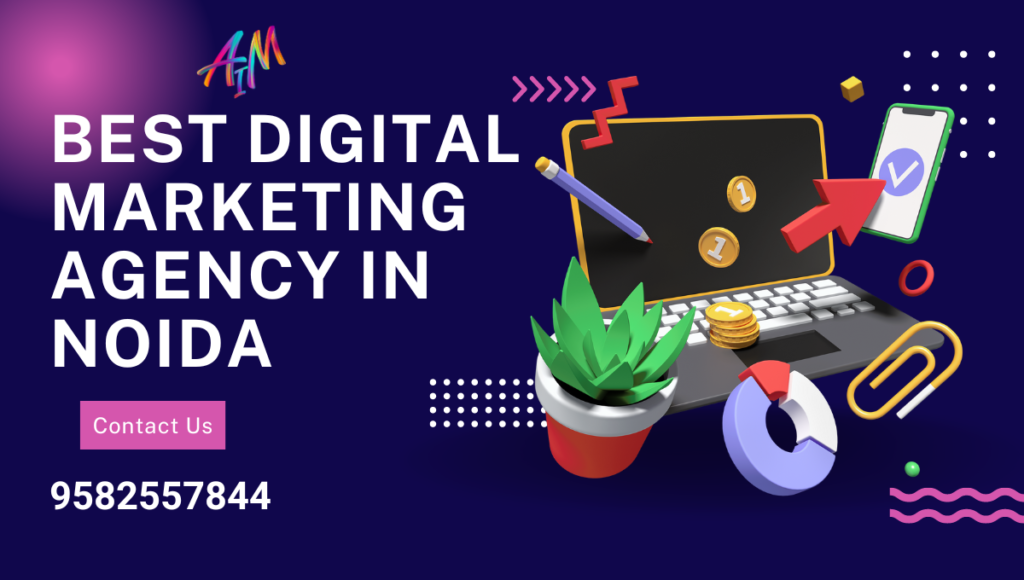Social media marketing has become an essential part of any digital marketing strategy. With the ever-growing number of platforms and tools available, understanding the different types of social media marketing can help businesses and marketers make informed decisions. This comprehensive guide will explore various types of social media marketing, their benefits, and best practices for each.
Table of Contents
- Introduction to Social Media Marketing
- Content Marketing on Social Media
- Influencer Marketing
- Social Media Advertising
- Video Marketing
- Community Building and Engagement
- Social Commerce
- Employee Advocacy
- User-Generated Content (UGC)
- Live Streaming
- Ephemeral Content
- Podcasting and Audio Content
- Social Media Contests and Giveaways
- Social Media Analytics and Monitoring
- Augmented Reality (AR) and Virtual Reality (VR)
- Social Listening
- Shoppable Posts
- Social Media Stories
- Chatbots and AI on Social Media
- Interactive Content
- Micro-Moments
- Voice Search and Social Media
- Ethical and Inclusive Marketing
- Social Media Takeovers
- Social Media Policies and Guidelines
- Cross-Platform Campaigns
- Advanced Analytics and Data-Driven Decisions
- Customer Journey Mapping
- Conclusion
Introduction to Social Media Marketing
Social media marketing involves leveraging social media platforms to connect with your audience, build your brand, increase sales, and drive website traffic. It encompasses a wide range of strategies and tactics, each suited to different goals and audiences. The primary social media platforms include Facebook, Instagram, Twitter, LinkedIn, Pinterest, Snapchat, TikTok, and YouTube.
Content Marketing on Social Media
Content marketing focuses on creating and sharing valuable, relevant, and consistent content to attract and retain a clearly defined audience. On Social media marketing, this can take various forms:
- Blog Posts and Articles: Sharing insightful blog posts and articles helps establish authority in your industry. Platforms like LinkedIn and Facebook are ideal for distributing long-form content.
- Infographics: Visually appealing infographics can simplify complex information and are highly shareable on platforms like Pinterest and Instagram.
- Quotes and Tips: Sharing motivational quotes, industry tips, or short insights can engage your audience and encourage sharing.
Best Practices:
- Ensure your content is valuable and relevant to your audience.
- Use high-quality visuals to enhance your posts.
- Maintain a consistent posting schedule.
Influencer Marketing
Influencer marketing involves collaborating with individuals who have a significant following on Social media marketing to promote your brand. Influencers can range from celebrities to niche content creators.
Types of Influencers:
- Mega-Influencers: Celebrities with millions of followers.
- Macro-Influencers: Well-known figures with hundreds of thousands of followers.
- Micro-Influencers: Individuals with a smaller, but highly engaged following (usually 1,000 to 100,000 followers).
- Nano-Influencers: Everyday individuals with a small but loyal following (usually less than 1,000 followers).
Best Practices:
- Choose influencers whose audience aligns with your target market.
- Collaborate with influencers who share your brand values.
- Ensure transparency with clear disclosure of sponsored content.
Social Media Advertising
Social media advertising involves paid campaigns on platforms like Facebook, Instagram, Twitter, LinkedIn, and TikTok. These platforms offer sophisticated targeting options, allowing you to reach specific demographics.
Types of Social Media Ads:
- Image Ads: Simple yet effective ads featuring a single image.
- Video Ads: Engaging ads that can showcase your product or service in action.
- Carousel Ads: Ads that allow multiple images or videos in a single ad, perfect for showcasing product collections.
- Sponsored Content: Posts promoted to reach a larger audience than your organic reach.
Best Practices:
- Use eye-catching visuals and compelling copy.
- Take advantage of targeting options to reach your ideal audience.
- Monitor and adjust your campaigns based on performance metrics.
Video Marketing
Video content is one of the most engaging forms of content on Social media marketing. Platforms like YouTube, Facebook, Instagram, and TikTok are ideal for video marketing.
Types of Video Content:
- Tutorials and How-Tos: Educational videos that provide value to your audience.
- Behind-the-Scenes: Authentic glimpses into your company culture or production process.
- Product Demos: Showcase your product’s features and benefits.
- User Testimonials: Share real-life experiences from your customers.
Best Practices:
- Keep your videos concise and to the point.
- Optimize videos for each platform’s specifications.
- Include a clear call-to-action (CTA).
Community Building and Engagement
Building a community around your brand involves fostering a sense of belonging among your audience. This can be achieved through active engagement and creating spaces for your audience to connect.
Strategies:
- Facebook Groups: Create a group centered around your brand or industry.
- Twitter Chats: Host regular Twitter chats to discuss relevant topics.
- Instagram Stories Q&A: Use Instagram Stories to interact with your audience in real-time.
Best Practices:
- Be responsive and engage with your audience regularly.
- Encourage user interaction and content sharing.
- Create exclusive content or offers for your community members.
Social Commerce
Social commerce refers to selling products directly through Social media marketing platforms. Features like Instagram Shopping, Facebook Shops, and Pinterest Buyable Pins make it easier for users to purchase products without leaving the platform.
Best Practices:
- Ensure your product images are high-quality and appealing.
- Provide clear and concise product descriptions.
- Use social proof such as reviews and ratings to build trust.
Employee Advocacy
Employee advocacy involves leveraging your employees’ social networks to promote your brand. Encouraging employees to share company content can significantly extend your reach and build credibility.
Best Practices:
- Provide employees with shareable content and guidelines.
- Recognize and reward employees who actively participate.
- Foster a positive work culture to inspire genuine advocacy.
User-Generated Content (UGC)
User-generated content is any content created by your customers or audience. UGC can be a powerful tool for building trust and engagement.
Examples of UGC:
- Customer Photos and Videos: Encourage customers to share their experiences with your product.
- Reviews and Testimonials: Highlight positive feedback from your customers.
- Hashtag Campaigns: Create a branded hashtag for users to share their content.
Best Practices:
- Feature UGC on your Social media marketing channels and website.
- Always credit the original creator.
- Create incentives for users to share their content.
Live Streaming
Live streaming offers a way to interact with your audience in real-time. Platforms like Facebook Live, Instagram Live, and YouTube Live are popular for hosting live events, Q&A sessions, and behind-the-scenes content.
Best Practices:
- Promote your live stream in advance to build anticipation.
- Engage with viewers by responding to comments and questions.
- Provide value through exclusive content or announcements.
Ephemeral Content
Ephemeral content is short-lived, disappearing after a set period (usually 24 hours). This type of content is popular on platforms like Instagram Stories, Snapchat, and Facebook Stories.
Best Practices:
- Use ephemeral content to create a sense of urgency.
- Share behind-the-scenes moments or time-sensitive offers.
- Keep the content casual and authentic.
Podcasting and Audio Content
Podcasting has seen a resurgence as a popular medium for content consumption. Platforms like Spotify, Apple Podcasts, and Google Podcasts are ideal for sharing long-form audio content.
Best Practices:
- Choose topics that resonate with your audience.
- Invest in good audio equipment for high-quality sound.
- Promote your podcast episodes across your Social media marketing channels.
Social Media Contests and Giveaways
Contests and giveaways are effective for increasing engagement and growing your audience. They can be hosted on any Social media marketing platform and can involve various types of participation.
Best Practices:
- Clearly outline the rules and entry requirements.
- Offer prizes that are relevant and appealing to your audience.
- Promote the contest across multiple channels for maximum reach.
Social Media Analytics and Monitoring
Analyzing and monitoring your Social media marketing performance is crucial for understanding what works and what doesn’t. Tools like Google Analytics, Hootsuite, and Sprout Social can provide valuable insights.
Key Metrics:
- Engagement Rate: Measures the interaction your content receives.
- Reach and Impressions: Indicates how many people see your content.
- Conversion Rate: Tracks how many people take the desired action.
Best Practices:
- Regularly review your analytics to inform your strategy.
- Adjust your tactics based on performance data.
- Use insights to optimize your content and campaigns.
Augmented Reality (AR) and Virtual Reality (VR)
AR and VR are transforming the way brands interact with their audience on social media. These technologies provide immersive experiences that can significantly enhance user engagement.
Applications:
- AR Filters: Platforms like Instagram and Snapchat offer AR filters that can be used for fun, interactive content.
- VR Experiences: Brands can create virtual tours or immersive experiences that allow users to engage with their products or services in a new way.
Best Practices:
- Ensure that AR and VR content is user-friendly and enhances the user experience.
- Use AR filters to create interactive and shareable content.
- Leverage VR for product demos, virtual store tours, or experiential marketing campaigns.
Social Listening
Social listening involves monitoring social media platforms for mentions of your brand, competitors, and industry-related keywords. This practice helps you understand public sentiment and identify opportunities or issues in real-time.
Tools for Social Listening:
- Hootsuite: Offers social listening capabilities to track mentions and keywords.
- Brandwatch: Provides in-depth social media monitoring and analytics.
- Sprout Social: Includes social listening features to track brand mentions and sentiment.
Best Practices:
- Regularly monitor mentions of your brand and relevant keywords.
- Respond promptly to both positive and negative mentions.
- Use insights from social listening to inform your content and engagement strategies.
Shoppable Posts
Shoppable posts allow users to purchase products directly from social media posts. Platforms like Instagram and Pinterest have integrated shopping features that streamline the purchasing process.
Benefits:
- Reduces friction in the buyer’s journey by allowing in-app purchases.
- Enhances the user experience by providing a seamless shopping process.
- Increases conversion rates by simplifying the path to purchase.
Best Practices:
- Tag products accurately in your posts.
- Use high-quality images and engaging captions to attract potential buyers.
- Regularly update your product catalog to reflect current inventory.
Social Media Stories
Social media stories are short, ephemeral posts that disappear after 24 hours. They are available on platforms like Instagram, Facebook, Snapchat, and more recently, LinkedIn.
Benefits:
- Creates a sense of urgency and encourages immediate engagement.
- Allows for more informal, behind-the-scenes content.
- High visibility as stories appear at the top of users’ feeds.
Best Practices:
- Use a mix of photos, videos, and interactive elements like polls and questions.
- Post regularly to keep your audience engaged.
- Use analytics to track which stories perform best and optimize accordingly.
Chatbots and AI on Social Media
Chatbots and AI-driven tools are becoming increasingly prevalent on social media platforms. They can automate customer service, enhance user interaction, and provide personalized experiences.
Applications:
- Customer Support: Automate responses to common inquiries and provide instant assistance.
- Sales Assistance: Guide users through the purchasing process and recommend products.
- Engagement: Interact with users in real-time, offering personalized content and suggestions.
Best Practices:
- Ensure your chatbot is well-programmed to handle a variety of inquiries.
- Provide an option for users to speak with a human representative if needed.
- Regularly update your chatbot’s knowledge base to reflect new information and products.
Interactive Content
Interactive content engages users by requiring active participation. This can include quizzes, polls, surveys, and interactive infographics.
Benefits:
- Increases user engagement and time spent on your content.
- Provides valuable data and insights about your audience.
- Enhances the overall user experience by making content more engaging.
Best Practices:
- Ensure your interactive content is relevant and valuable to your audience.
- Use interactive elements to gather feedback and insights.
- Promote your interactive content across multiple platforms to maximize reach.
Micro-Moments
Micro-moments are instances when consumers turn to their devices for quick answers or information. These moments are categorized into four types: I-want-to-know, I-want-to-go, I-want-to-do, and I-want-to-buy.
Strategies:
- I-Want-to-Know: Provide quick, informative content to answer common questions.
- I-Want-to-Go: Optimize for local searches and provide location-specific information.
- I-Want-to-Do: Offer how-to guides and tutorials to assist users in their tasks.
- I-Want-to-Buy: Streamline the purchasing process and provide clear CTAs.
Best Practices:
- Optimize your content for mobile to cater to users on-the-go.
- Use analytics to identify and target micro-moments relevant to your audience.
- Create content that is easily discoverable and consumable in short bursts.
Voice Search and Social Media
With the rise of voice-activated devices like Amazon Echo and Google Home, optimizing your social media content for voice search is becoming increasingly important.
Strategies:
- Use conversational language and long-tail keywords in your content.
- Optimize for frequently asked questions (FAQs) related to your industry.
- Ensure your content is structured and easy to read, enhancing its chances of being featured in voice search results.
Best Practices:
- Stay updated on the latest voice search trends and algorithms.
- Create content that addresses common voice search queries.
- Leverage voice search insights to inform your overall content strategy.
Ethical and Inclusive Marketing
Consumers are increasingly looking for brands that reflect their values and promote inclusivity. Ethical and inclusive marketing involves being mindful of representation, diversity, and social responsibility in your campaigns.
Strategies:
- Representation: Ensure your content reflects diverse audiences.
- Inclusivity: Use inclusive language and imagery.
- Social Responsibility: Highlight your brand’s commitment to ethical practices and social causes.
Best Practices:
- Conduct regular audits of your content to ensure diversity and inclusivity.
- Engage with communities and causes that align with your brand values.
- Be transparent about your efforts and progress in ethical and inclusive marketing.
Social Media Takeovers
A social media takeover involves allowing an influencer, employee, or guest to control your social media account for a set period. This strategy can provide fresh content and new perspectives to your audience.
Benefits:
- Increases engagement by introducing new and exciting content.
- Expands your reach by tapping into the takeover host’s audience.
- Provides authentic and diverse viewpoints.
Best Practices:
- Clearly define the goals and guidelines for the takeover.
- Choose a host whose audience aligns with your target market.
- Promote the takeover in advance to build anticipation.
Social Media Policies and Guidelines
Having clear social media policies and guidelines is essential for maintaining brand consistency and protecting your reputation. These policies should cover appropriate use, content guidelines, and crisis management.
Components of a Social Media Policy:
- Purpose and Scope: Define the objectives and reach of your social media efforts.
- Content Guidelines: Outline what is acceptable to post and share.
- Crisis Management: Provide procedures for handling negative feedback or crises.
Best Practices:
- Regularly update your policies to reflect changes in social media trends and platform rules.
- Ensure all employees and stakeholders are familiar with the policies.
- Monitor and enforce adherence to the guidelines.
Cross-Platform Campaigns
Cross-platform campaigns involve coordinating marketing efforts across multiple social media platforms to ensure a consistent message and reach a broader audience.
Strategies:
- Consistent Branding: Maintain a unified brand voice and visual identity across all platforms.
- Tailored Content: Adapt your content to fit the unique features and audience of each platform.
- Integrated Analytics: Use analytics tools that can track performance across multiple platforms.
Best Practices:
- Plan your campaigns in advance to ensure smooth execution.
- Use scheduling tools to streamline the posting process.
- Regularly analyze campaign performance and make adjustments as needed.
Advanced Analytics and Data-Driven Decisions
Advanced analytics involves using sophisticated tools and techniques to gain deeper insights into your Social media marketing performance. This can include sentiment analysis, predictive analytics, and advanced audience segmentation.
Tools for Advanced Analytics:
- Google Analytics: Provides comprehensive data on website and social media traffic.
- HubSpot: Offers advanced analytics for tracking and optimizing social media campaigns.
- Sprinklr: A unified platform for managing and analyzing social media activity.
Best Practices:
- Regularly review your analytics to identify trends and opportunities.
- Use data to inform and refine your Social media marketing strategy.
- Experiment with different approaches and measure their impact.
Customer Journey Mapping
Customer journey mapping involves understanding and visualizing the different stages a customer goes through when interacting with your brand on Social media marketing. This can help you tailor your content and engagement strategies to better meet their needs.
Stages of the Customer Journey:
- Awareness: Attracting potential customers through informative and engaging content.
- Consideration: Providing detailed information and answering questions to help prospects evaluate your offerings.
- Decision: Offering compelling reasons and clear CTAs to convert prospects into customers.
- Retention: Engaging with customers post-purchase to build loyalty and encourage repeat business.
Best Practices:
- Create detailed personas to represent your target audience.
- Map out the customer journey and identify key touchpoints.
- Tailor your content and engagement strategies to each stage of the journey.
Conclusion
Social media marketing is a dynamic and multifaceted field. By understanding and leveraging the various types of social media marketing, businesses can effectively reach and engage their audience, build their brand, and drive growth. Whether through content marketing, influencer partnerships, or social commerce, each strategy offers unique benefits and opportunities. Consistent evaluation and adaptation are key to staying ahead in the ever-evolving social media landscape.
This guide provides a broad overview of the different types of social media marketing. To achieve the best results, tailor these strategies to your specific business goals and audience needs.




